Do fast shots at short ranges sound like your kind of speed?
Do you need more power to see small targets at distance to improve accuracy?
On average, both the red dot sight and riflescope are excellent optics for the AR-15. Each bring advantages to the table, but they also have their own drawbacks.
Determining which is the most appropriate optic for the job depends on a few things such as reliability, speed, mounting ease, and more.
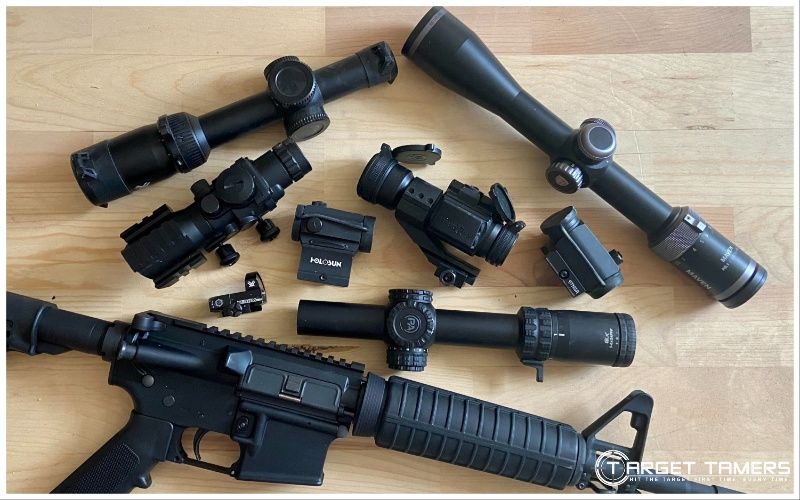
I look at specific considerations such as cost, if you have astigmatism, accuracy, co-witnessing, and more to compare how a scope and red dot sight perform when it’s intended for the AR-15.
Riflescope VS Red Dot for AR-15
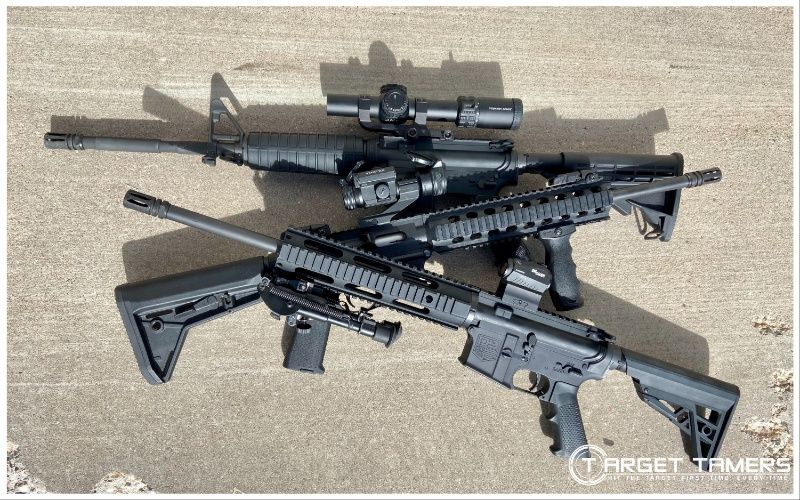
Considering that the AR-15 can be extensively customized, and though they’re commonly chambered for the 5.56x45mm or the .223 Rem., they do come chambered for different calibers. This provides a versatile platform to be used in many applications with either a red dot or scope on the rail.
As a result, it really comes down to the primary application for the rifle and how much you’re willing to spend on the right optic.
Here’s how the scope and red dot stack up against each other when on the rail of an AR-15.
(For non-AR-15-specific comparisons, see our scopes VS red dot guide!)
1. Reliability
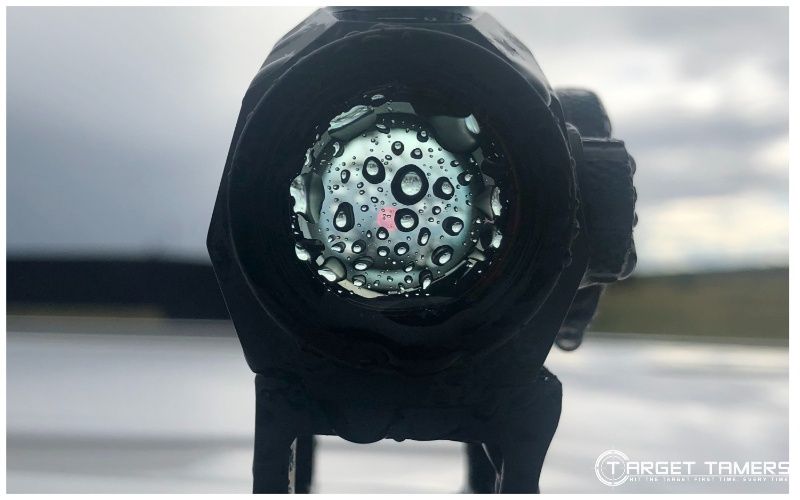
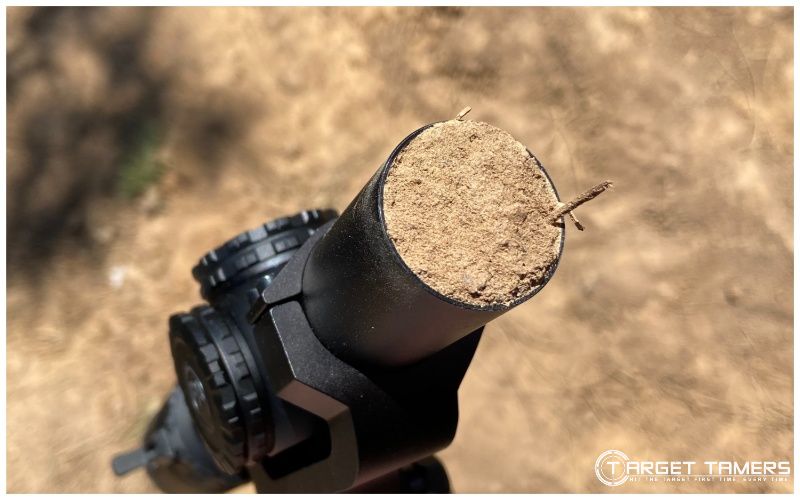
A well-made red dot sight can out-do a cheap riflescope in zero retention, durability, and overall performance. However, the scope still has an edge over a red dot. A riflescope always has a visible reticle whereas a red dot sight relies on illumination. Illumination relies on a power source.
Batteries can die. Though some red dots have industry-best battery runtimes of tens of thousands of hours, a riflescope with either wire or a glass-etched reticle doesn’t require illumination for use.
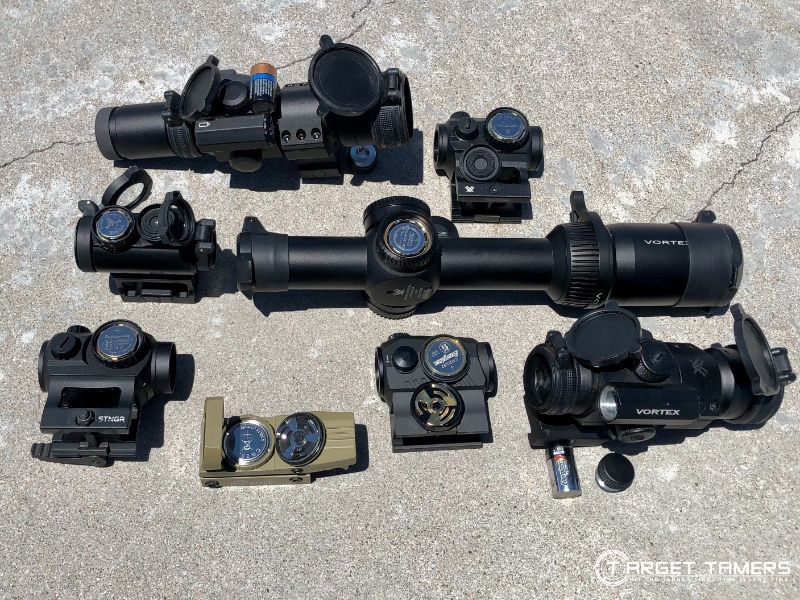
There is the argument that you can co-witness irons with a red dot sight on the rail too. Getting extremely technical though, it’s really just adding another sighting system into the mix. It’s not actually improving the reliability of a red dot sight.
Reliability also covers zero retention which includes the mounting system. Many red dots come with included mounts, and most are pretty good for holding torque and retaining zero.
On an AR-15 with barely any recoil (right?), you’d think that there’s little concern affecting either a cantilever mount or red dot base. However, repeated recoil and shock over time can loosen up some components affecting zero.
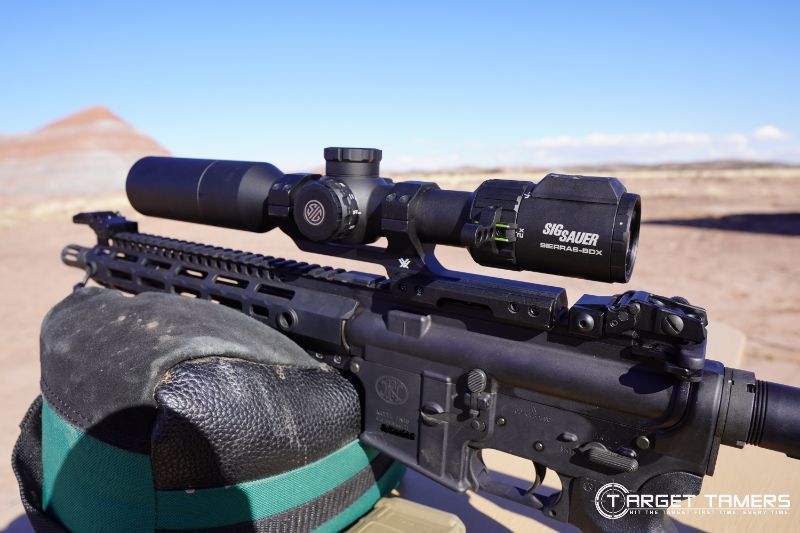
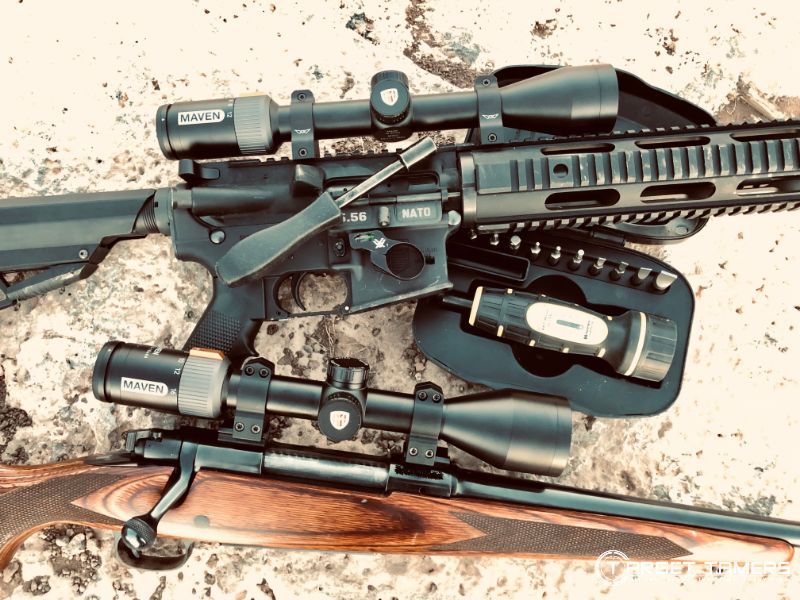
Reliability would then be determined by use of the appropriate mounts, mount type (quick detach versus standard mount), mount quality, and proper scope and red dot installation to the mount and rail.
There’s a lot more involved in the scope mounting process versus red dots with simple pre-installed mounts. This can mean that more attention to detail is paid to correctly ensure a scope will hold zero, shoot accurately, and can be relied upon for repeatability.
Winner: Riflescope
2. Cost
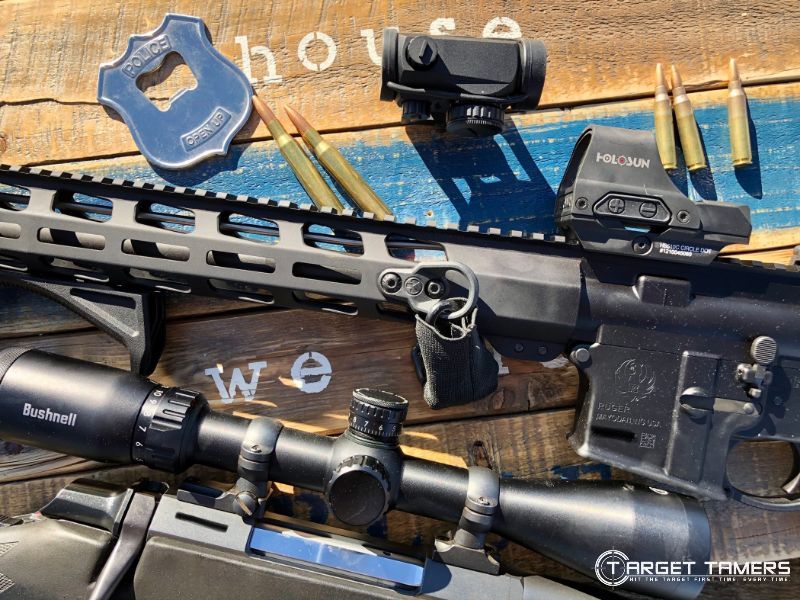
In general, red dot sights start at a cheaper price point than riflescopes. Some of the most popular red dots are under $150 and are used for some hunting, home defense, and range use. The application determines the quality and price range required for either a scope or a red dot sight.
When it comes to outfitting the AR-15 with the cheapest optic available, the red dot sight is the way to go.
In my opinion, many riflescopes under $100 fall into the same category as red dot sights under $50 – there’s some good ones but many will have problems with durability and zero retention.
Given that some of the absolute best red dot sights range from around $400-$1000 and the best riflescopes can be upwards of $1000, the red dot sight is one of the most cost-effective optics to get a sighting system on your rail.
Winner: Red Dot Sight
3. Magnification
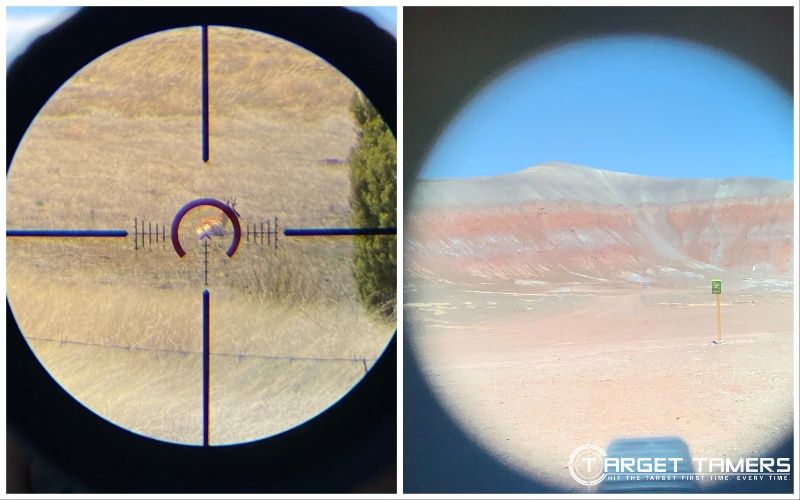
An AR-15 and unmagnified red dot sight is a powerful combination for rapid engagement under 100 yards. That is their job, and they do it well together for fast and accurate results in combat, CQB, and short-range shooting.
Whenever you add magnification to the combo, it requires more concentration and focus for situational awareness, but it does improve target awareness. For those who need a little more power for a magnified image, you can add a red dot magnifier to the rail. A magnifier has fixed magnification, and it is another purchase as it is another optic.
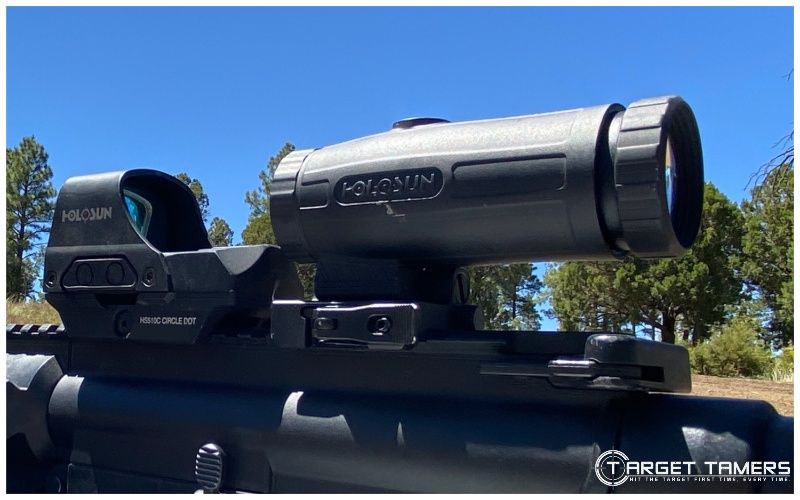
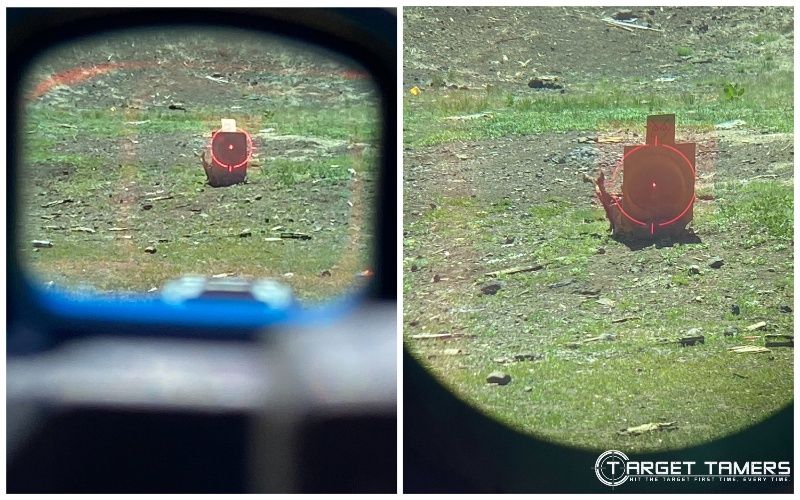
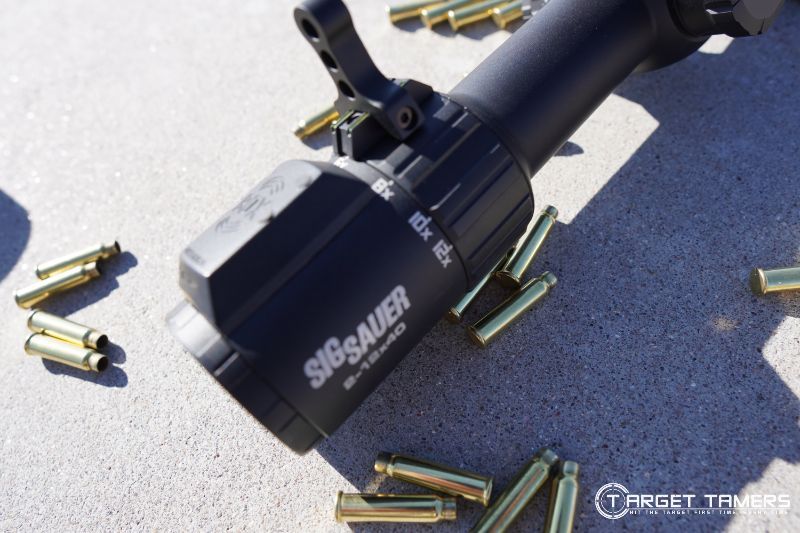
With the riflescope be it a 5-25x, 4-12x, 3-9x, you have the benefits of variable magnification (except for fixed power scopes). Even with an LPVO, you have the advantage of magnifying the sight picture.
Variable magnification is built into the scope. Because of this, you don’t need to come up with the money to buy a separate magnifier or find room on the rail for one.
For more information on rifle scope magnification and effective ranges, check out our guide on it here.
Winner: Riflescope
4. Astigmatism
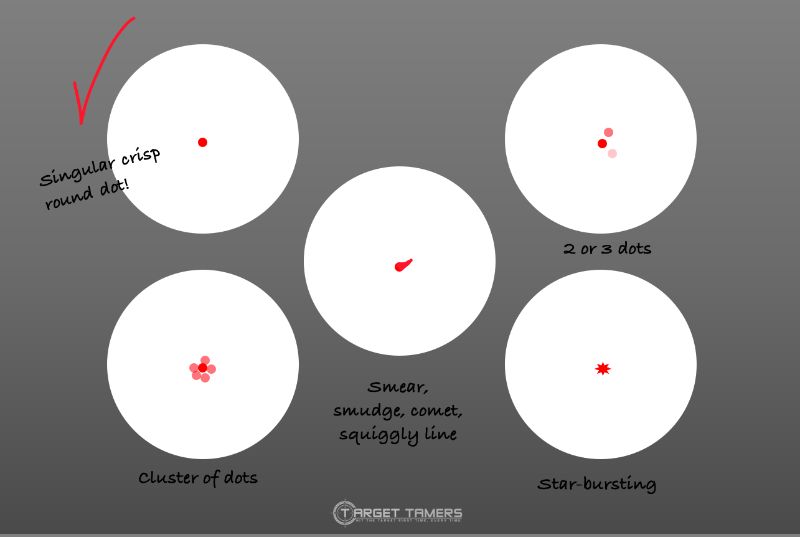
One of the biggest problems shooters experience with a red dot sight is a distorted dot. What should be a crisp, round dot looks more like a comet, smear, cluster of grapes, or a star. More often than not, it’s not the red dot sight that’s at fault, it’s you.
Having astigmatism, or really any refractive error condition, can make you see the dot differently than how it should appear. This is usually the case with reflex red dot sights moreso than prism red dot sights. There is a difference!
A riflescope reticle is either made of wire or is laser etched. There is also an adjustable eyepiece to make sure the reticle is sharp and clear for your vision. Since the reticle is not a reflection of an LED, those with vision problems are likely better served by a riflescope over a red dot sight.
Winner: Riflescope
5. CQB
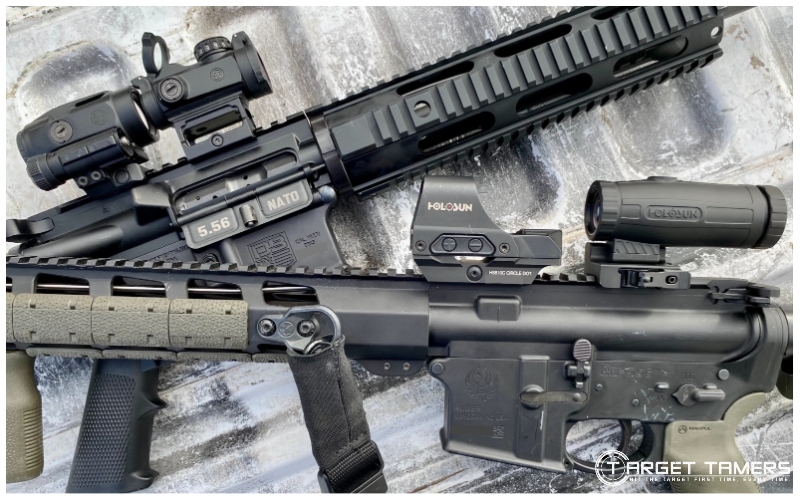
In general, CQB (close-quarters battle) is close-range engagement. Though under 100 yards is an acceptable linear distance of what close-range means, it can also encompass confined spaces in a home, building, or typical short ranges in urban terrain.
The AR-15 is compact and versatile. Because it can be extensively customized, its modularity is valuable for CQB engagements. You can modify it to suit your needs whether you’re outfitting your AR for home defense or for duty use.
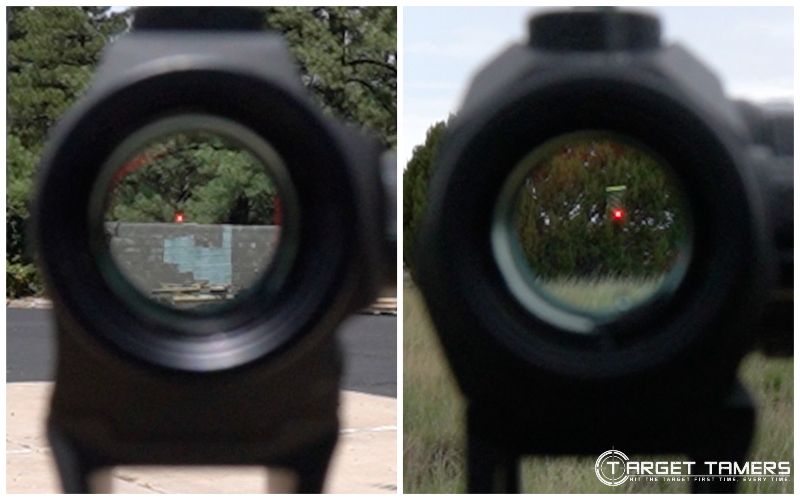
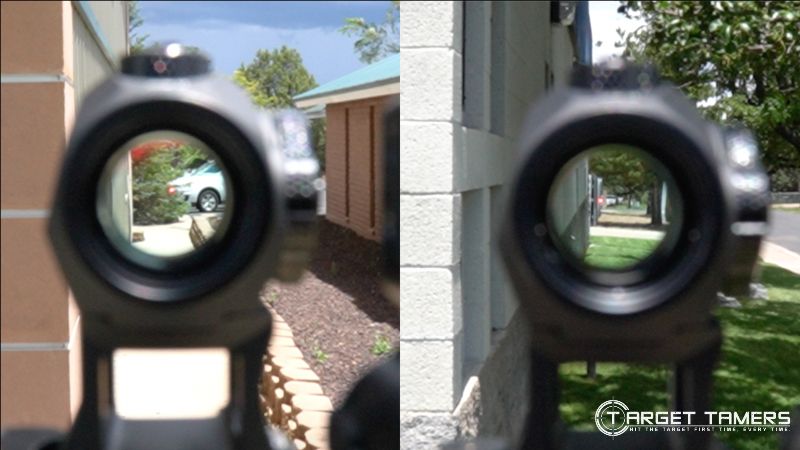
With that said, the red dot sight is a fantastic companion to the AR-15. Its simple aiming system (dot) with no magnification makes for rapid engagement. Put the dot on the target and shoot.
Because the red dot sight is also much more compact and lightweight than a scope, it will not overburden the rifle’s overall weight and can be easier to wield in tight and restricted spaces. The latter benefit is especially true since a red dot sight has unlimited eye relief and is more forgiving when you’re in an awkward position such as around corners, on your belly, etc.
Winner: Red Dot Sight
6. Long-Range
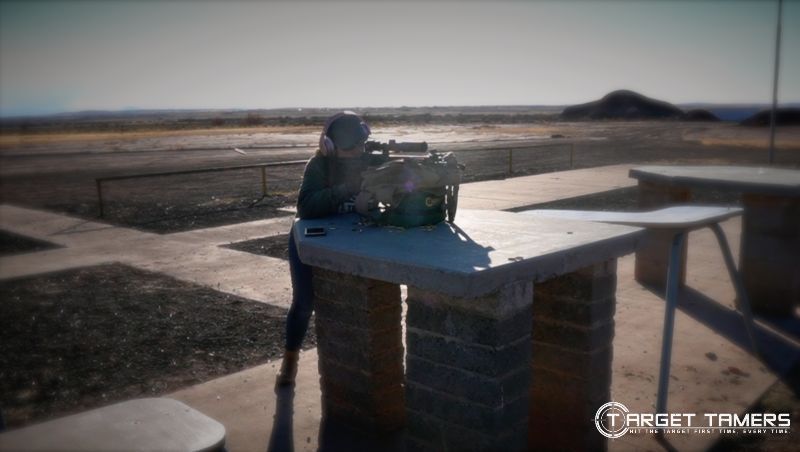
The AR-15 in 5.56mm is good for intermediate distances in my opinion, so around 400-800 yards. Sure, there are those that can shoot to 1000 yards and acquire good groups, but to ethically take down a deer with the same rifle and cartridge, well, you’re looking at under 100 yards.
It comes down to, what are you shooting at long range? If you’re looking for the minimum impact energy needed for self-defense at maximum range, you’re likely looking at about 500 yards. At that range, unless you have some sort of drop reticle in your red dot sight combined with a magnifier to identify and see the attacker, you’ll need a scope.
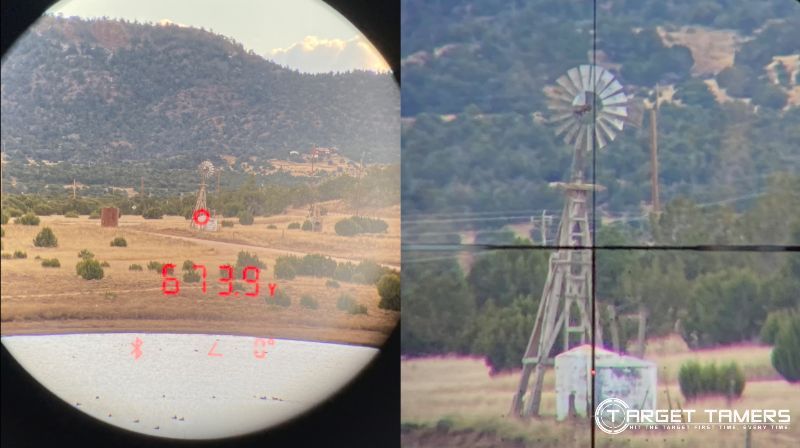
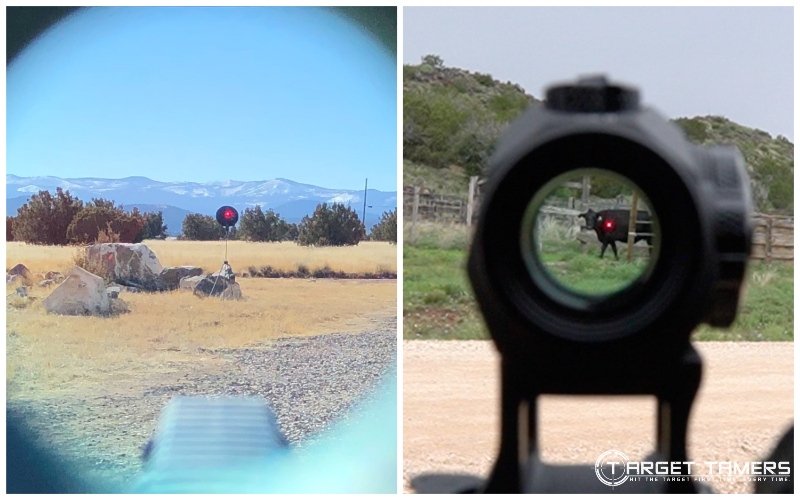
If you’re looking for maximum accuracy on paper at 1000 yards, you’ll need more than a long-range scope – maybe a mount with built-in MOA, quality ammo, and ideal weather conditions would be nice!
A red dot sight, even with a magnifier, can’t compete with a scope for accuracy, variable power, and bullet drop and wind holdover reticles for long-range shooting.
Winner: Riflescope
7. Speed
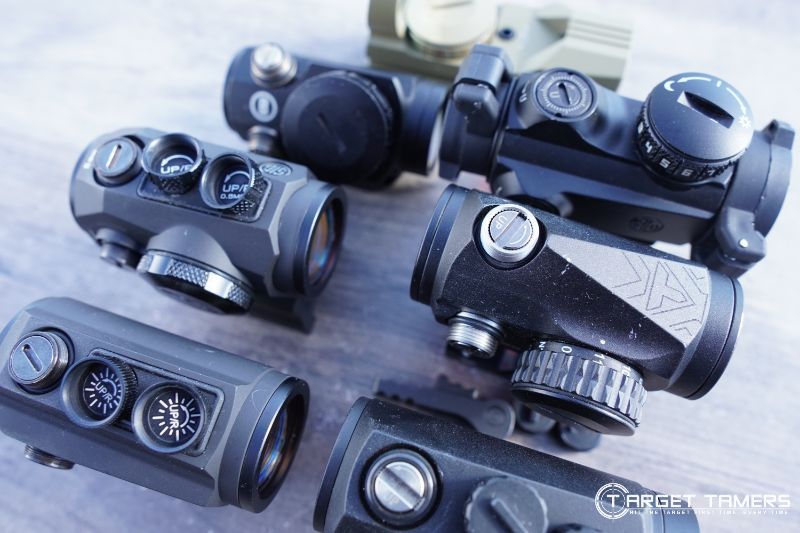
The red dot sight is faster to use than a riflescope. It’s fast and easy for the eyes to see an illuminated dot. With a consistent cheekweld, you don’t need to hunt for the dot which makes acquiring the sight picture almost instantaneous.
A red dot is also more forgiving of imperfect positioning behind it though parallax must be considered.
Reflex red dots have unlimited eye relief and an unlimited field of view which provides a high-speed experience to get on target and to transition between them even at different distances. These are advantages of using a red dot sight with an AR-15 that makes using this set-up quick and straightforward.
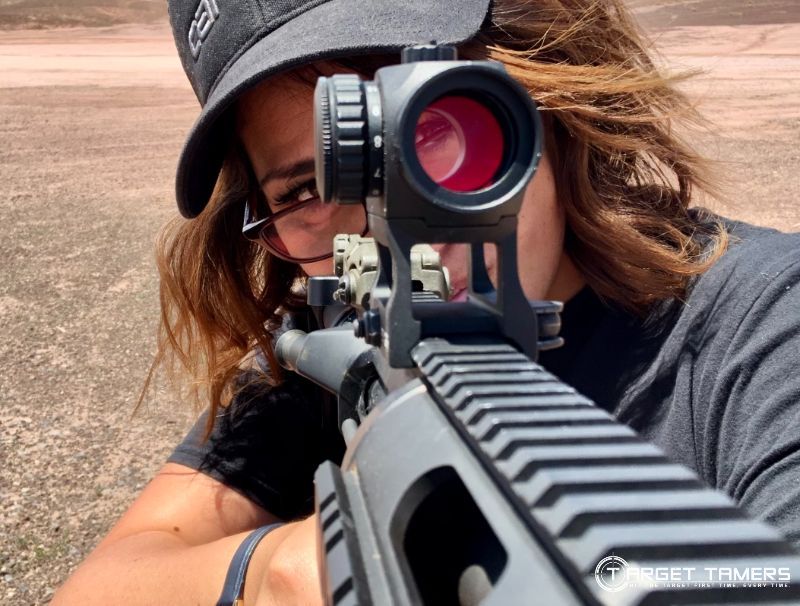
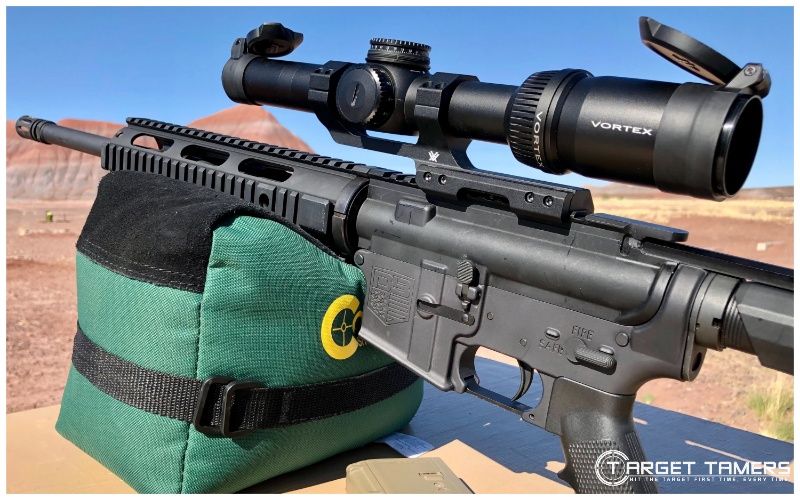
A scope on the other hand is slower. To shoulder it and position consistently to get within the eyebox, set the appropriate magnification or focus distance for the target, and get sights on the reticle - it’s a longer process.
Say the scope is already mounted, set to 1x magnification, and side focus is set for the target distance. In all, an LPVO even set at 1x, may still be slower to use though I would think you could compensate for that with training. Also, the scope should have true 1x magnification.
My thoughts are that many FFP reticles on an LPV scope are either too small to speedily use compared to an unmagnified red dot. An SFP reticle could be the solution, but I’ve found the illumination is not as bright as a red dot sight in an LPVO regardless of FFP or SFP reticles.
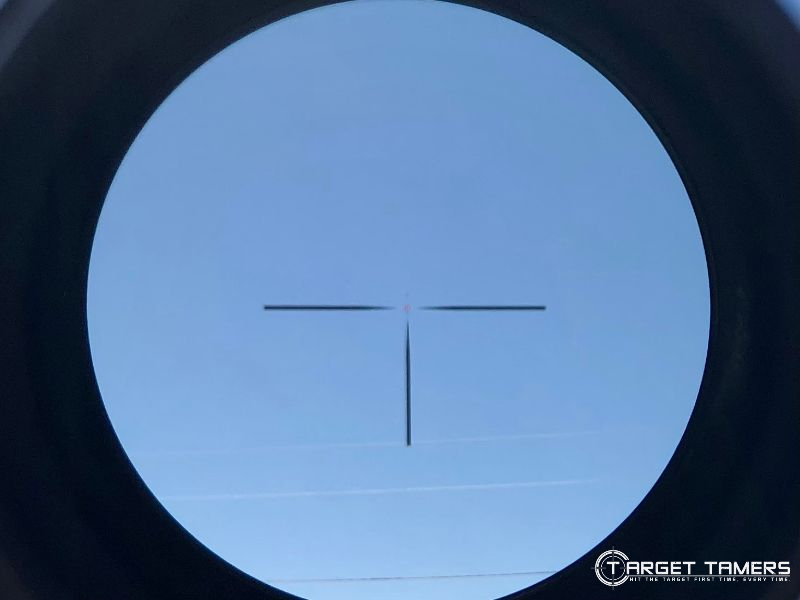
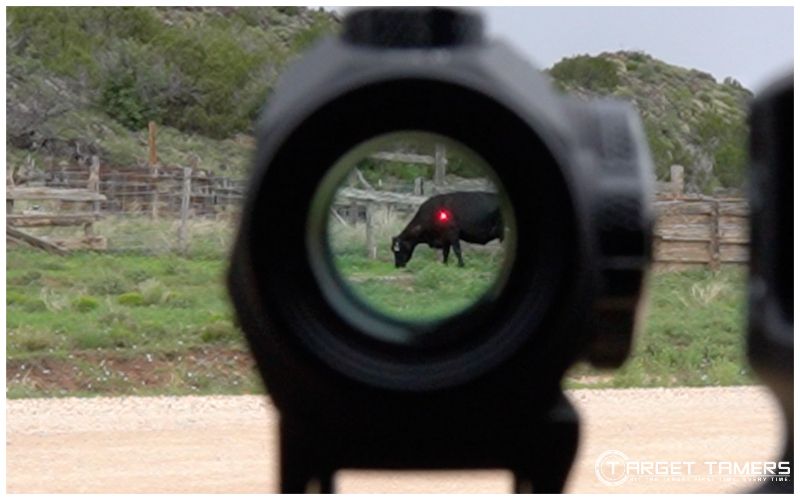
Also, 2 MOA is pretty much the industry standard for the smallest dot size in a red dot. There are some, like the EOTech EXPS3, that have 1 MOA dots. Many center and floating dots in LPVO scopes are smaller than 2 MOA. Small size dots combined with not-bright-enough illumination makes for slower reticle acquisition and therefore slower target (sight picture) acquisition.
Another point to consider is that parallax thing. Most red dots are advertised as parallax free and most red dots do a fantastic job. Generally, it doesn’t really matter where the dot seems to be physically located in the optic, your shot will go where the dot appears to be projected - most of the time… parallax, right!
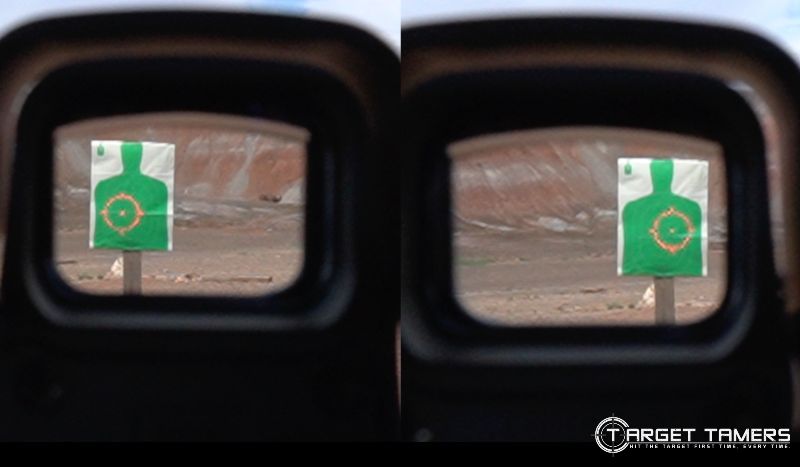
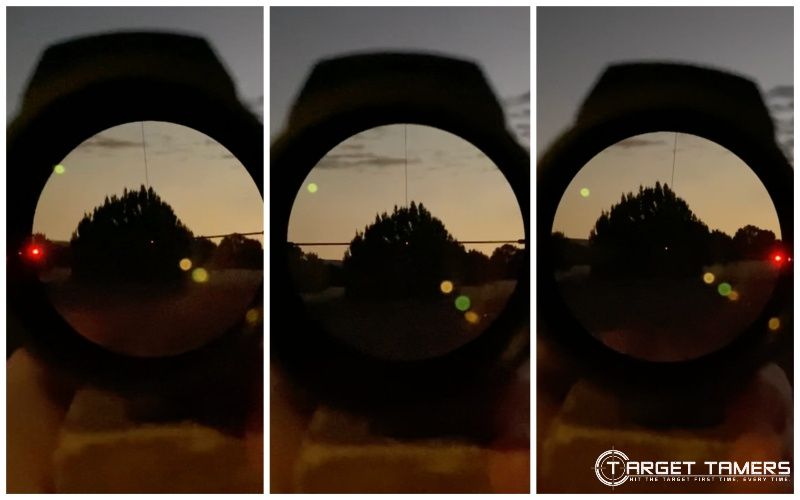
Riflescopes, well, if you have a canted reticle, you’re off. If you cant your rifle, you’re off. If the crosshairs are floating, you’ll be off. There’s a few more factors that interfere with speed when using a scope.
You’re also introducing more weight to your AR-15 with a scope. However, with training you can probably mitigate the downsides of that to improve speed.
Winner: Red Dot Sight
8. Accuracy
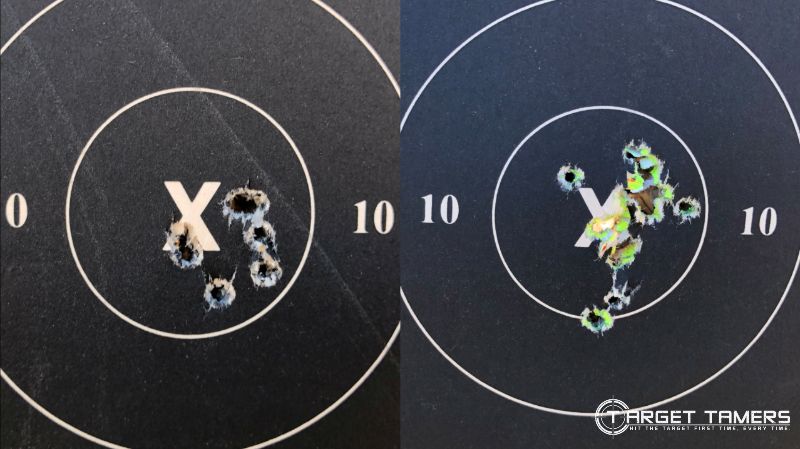
For maximum precision, the riflescope will out-do the red dot sight. Pair a red dot with a magnifier and the riflescope will still out-do the red dot sight combo.
Though I’ve had some very nice groupings with red dots on my AR-15 rifles, I’ll still go the riflescope route if I’m after precision. Red dots are excellent for speed and short ranges. I can keep both eyes open and can track and take down moving targets easier this way.
However, the riflescope offers greater precision especially as distance enters the equation. 3-gunners know this well and many will opt for an LPVO. Stay low for those short-range shots and dial it up for distant targets. But accuracy still matters, and a scope can offer that.
Not only is variable magnification an asset here, but complex ballistic reticles and the small measurement adjustments the turrets offer also contribute to making a more accurate shot.
Winner: Riflescope
9. Limited Rail Space
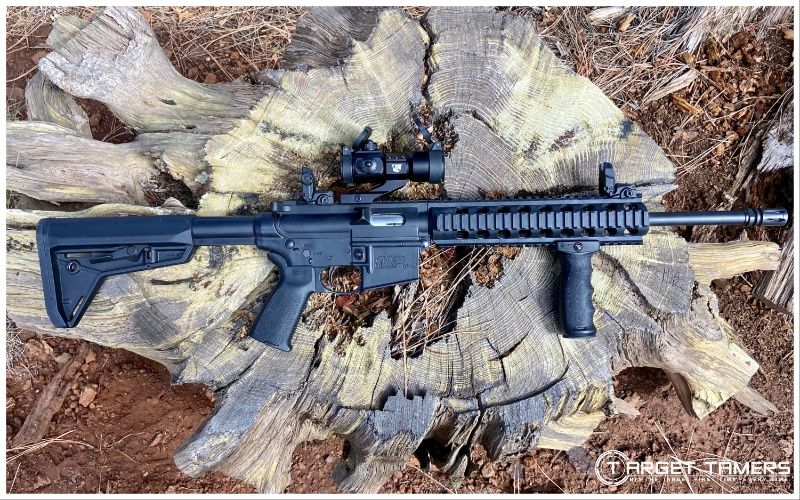
In general, there’s just less than 7" (approx.) of rail space on the upper receiver of an AR-15. That’s plenty of room for a red dot sight and magnifier or a riflescope. The idea is to mount your optics to this rail and not on the handguard rail.
This can get tricky if there’s a slew of optics intended for the rifle. However, the red dot sight takes the cake in having the smallest mounting length.
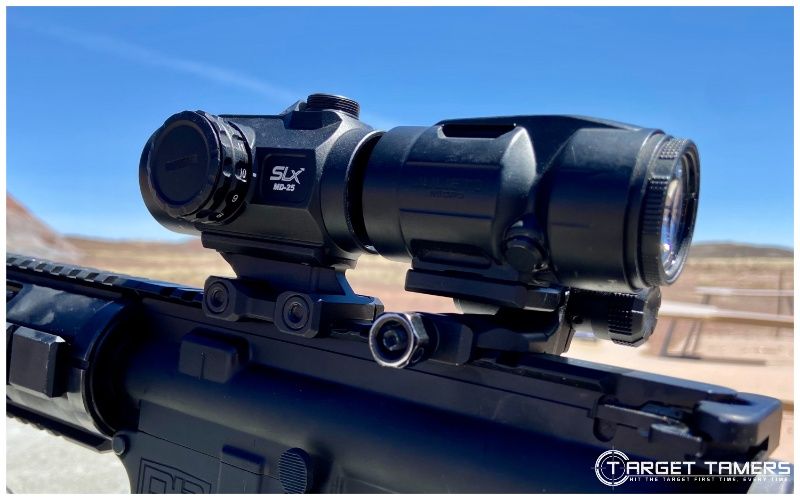
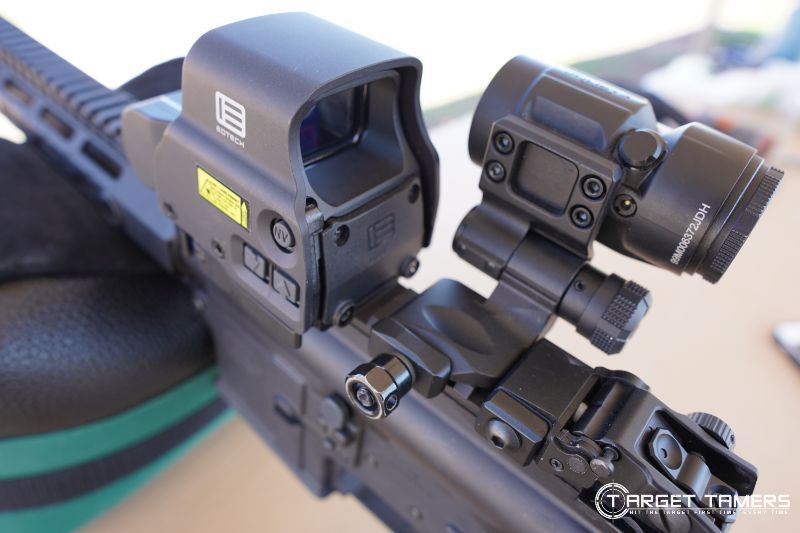
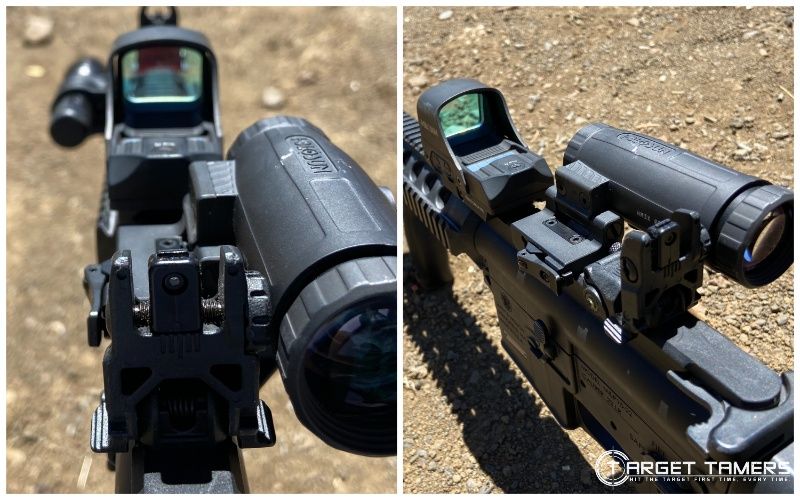
You can pair the red dot with a magnifier and still have room to spare. Even though a magnifier requires eye relief, and they have different mounting bases, they are all compact and short enough to fit on the rail with a red dot sight. Some magnifiers might also allow for a rear BUIS to stay on the rail without losing eye relief!
Things get tight and redundant with scopes. You can’t co-witness irons with a magnified scope… but you can use off-set irons to keep a secondary sighting system on the rail.
Scopes are obviously longer and bulkier than red dots. Though not as short and compact as a red dot mount, cantilever mounts are highly recommended for a riflescope.
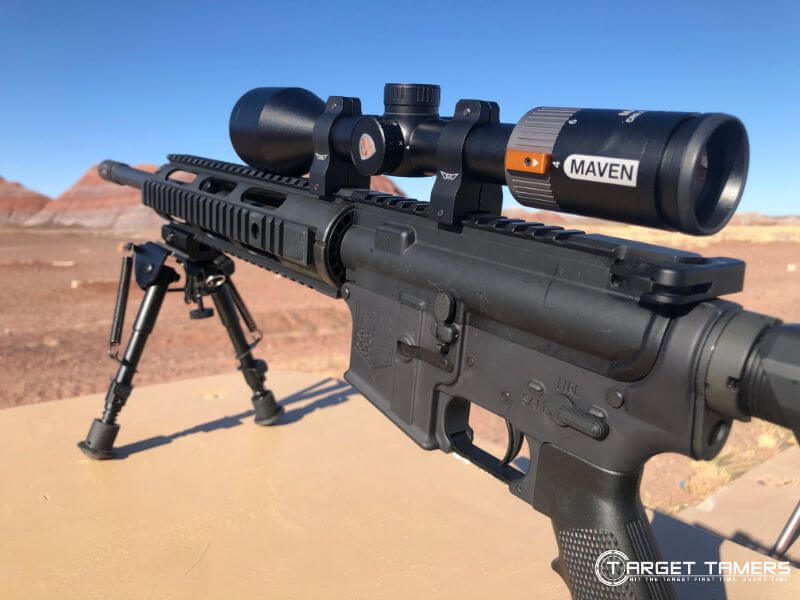
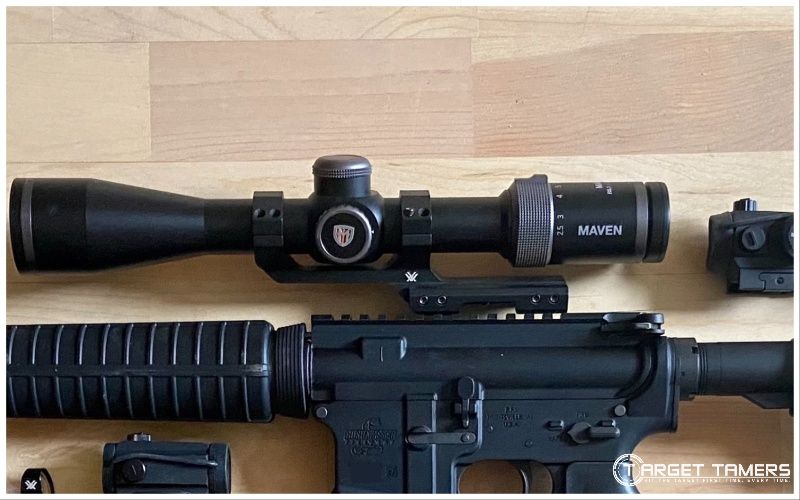
These mounts bring the scope up high enough and allows for a small mounting length since they’re one-piece mounts. I’ve used rings before and have had to put the front ring on the handguard rail making sure I was catering to that critical eye relief – not ideal.
Since many red dot mounts take up much less rail space than a cantilever mount, it’s clear which is the more compact option.
Winner: Red Dot Sight
10. Mounting Ease
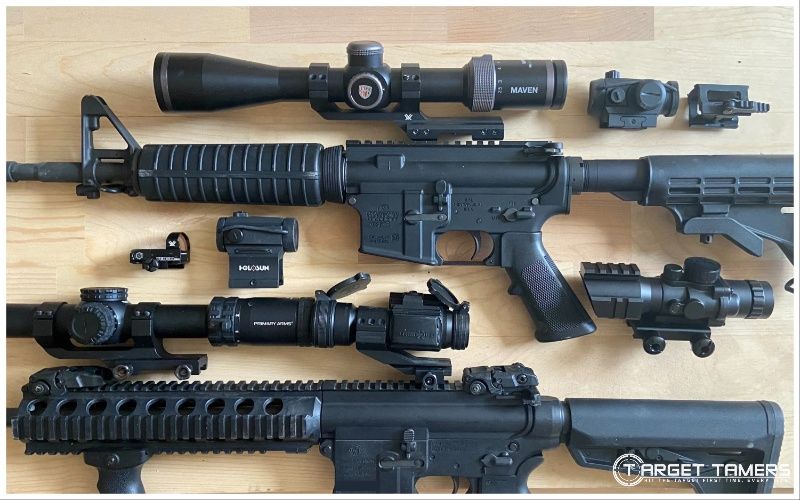
Almost all standard AR-15s will have a Picatinny rail. Red dots and scopes with the right bases will effortlessly mount to a Pic rail. Mounting a red dot is easy and especially convenient because the mounting system is usually an included accessory.
Whether it’s a lower third or absolute co-witness, low-profile, quick release, or standard mounts, they will fit to a standard Picatinny rail.
The height of red dot mounts is also perfect for the AR-15 where the upper receiver is in line with the stock.
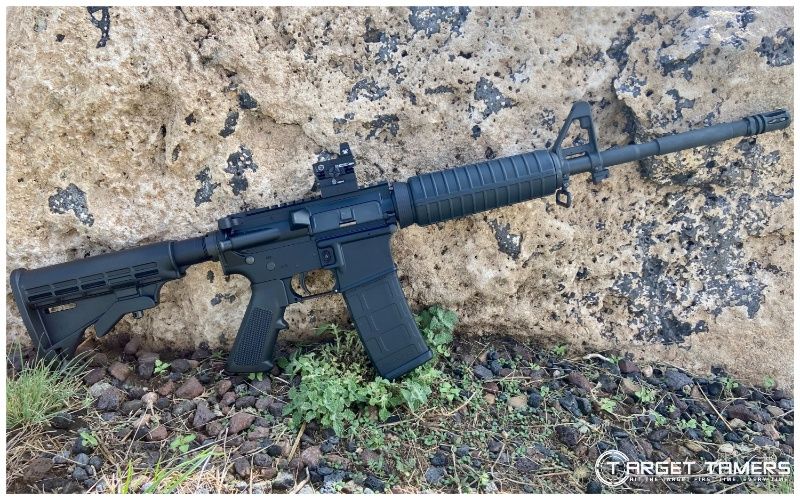
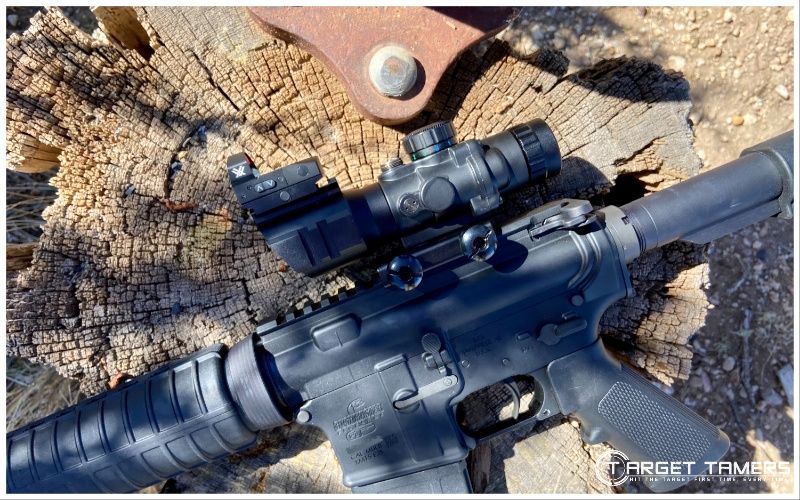
A pistol red dot sight may also come with a Picatinny rail adapter. This small mount allows the micro red dot to be mounted to a Pic rail on an AR-15. These adapters can also be used to mount a pistol red dot to any optic or mount that has an integrated Picatinny rail on it. This is often desired when pairing a red dot sight with a riflescope.
Riflescopes don’t typically come with an included mount in the box though some budget scopes may offer a complete bundle with a mount in the mix.
Cantilever mounts have bases that fit Picatinny rails and this makes it exceptionally quick and easy to get the scope mounted on an AR-15. The time it takes to mount the scope is really in the leveling, setting the eye relief, etc. regardless of how easy it is for the mount base to be secured to the Pic rail.
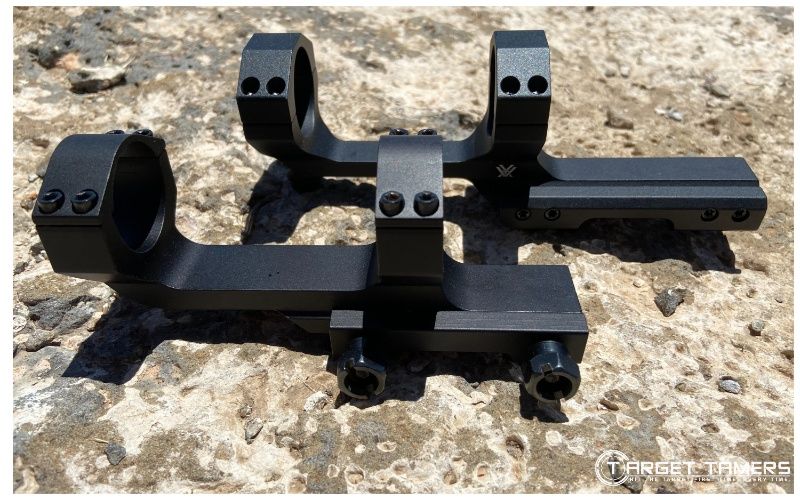
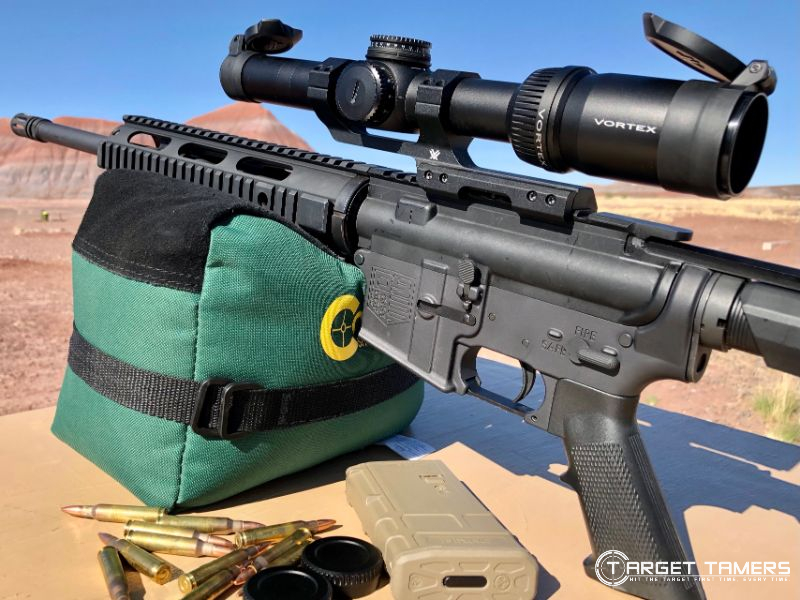
Though rings can be used to secure a scope to a Pic rail too, ring height is usually too short to bring the scope up high enough for a proper weld. Super high heights may be needed but rings you would use for rifles with angled stocks, like a bolt action, will be too short for the AR-15 flat-top platform.

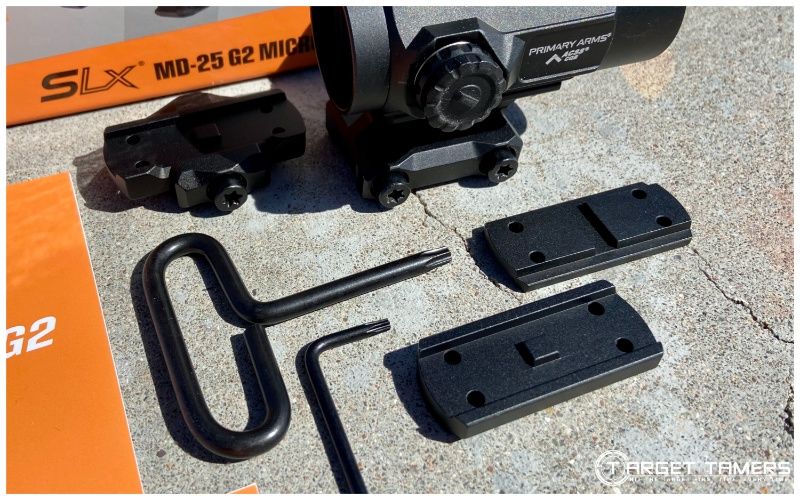
Red dots are quicker to mount, usually come with a mount included in the box, and the mount bases are specifically designed for flat-top rifles. The red dot sight has an inherent advantage over scopes regarding mounting ease to the AR-15.
Winner: Red Dot Sight
11. Co-Witness
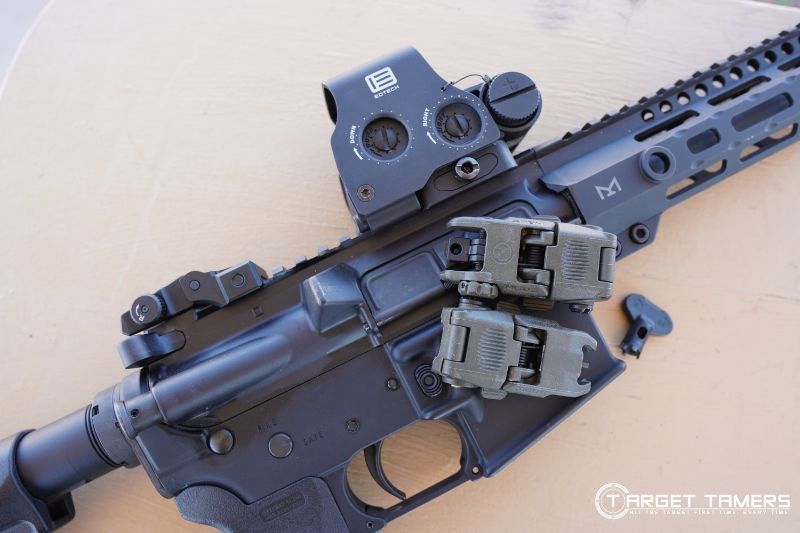
Having a secondary sighting system is a must-have for many. Red dots rely on power and anything that threatens the electronics can render the sight useless. Though back-up iron sights and red dots are zeroed independently of each other, a co-witness indicates BUIS visibility through the red dot.
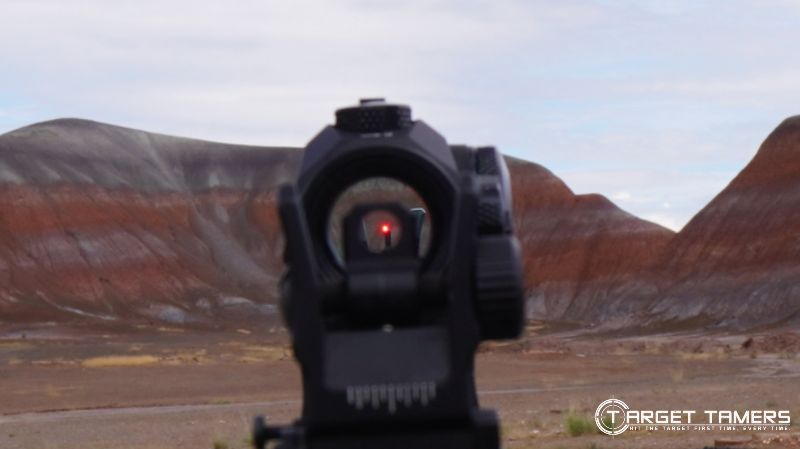
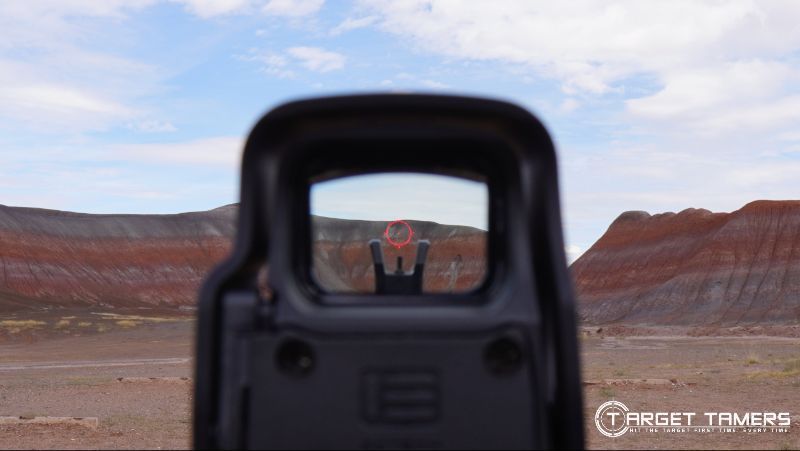
Having a co-witness is extremely beneficial for red dot sights on the rail that have a standard mount. These types of mounts are directly tensioned to the rail and cannot be quickly removed without use of the correct size tool to loosen the screw.
Quick detach mounts are made to quickly come off the rail without the use of tools. With a co-witness, you don’t have to remove a red dot sight that has a QD mount, but it can be done in a jiffy if the need arises.
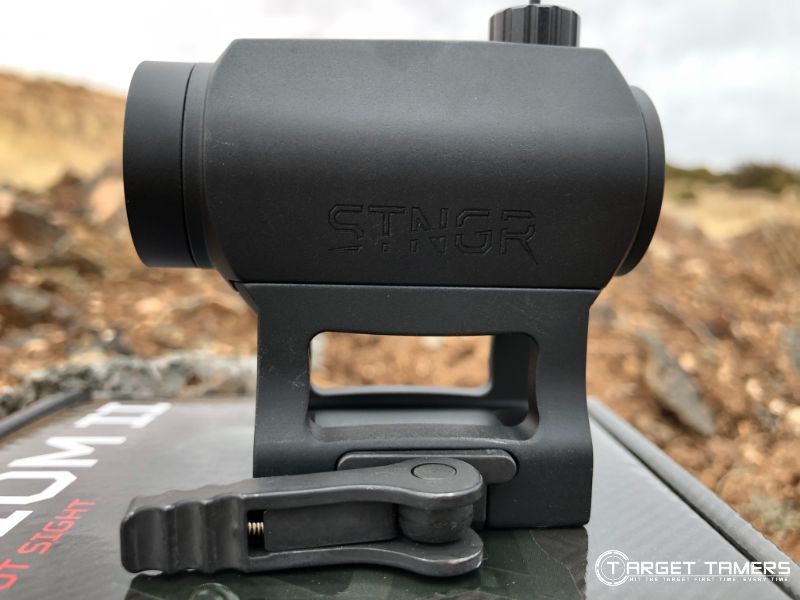
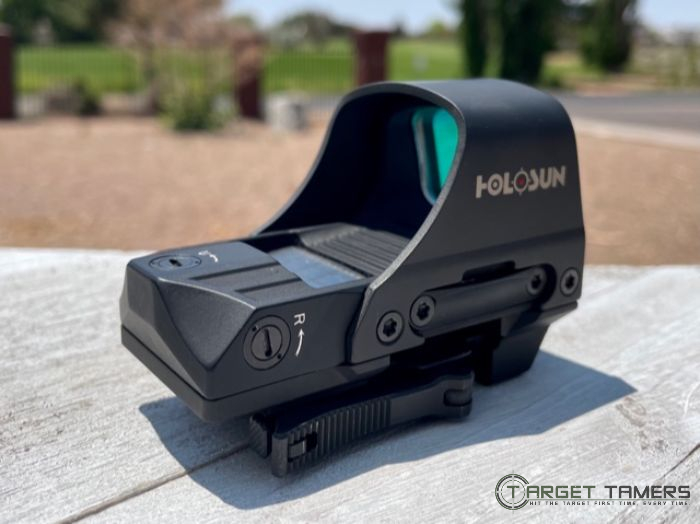
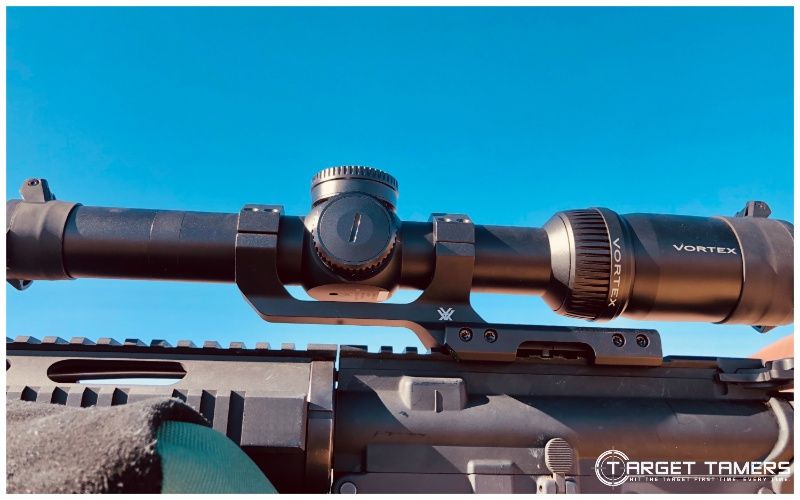
Because riflescopes have magnification, they are not compatible with use of iron sights. Even if you could get the rear iron sight on the rail and to flip up, it would very likely take from the eye relief of the scope. There would be nothing but focusing issues when trying to use BUIS through a scope anyway.
For those who insist on having irons with a scope, offset iron sights are the way to go.
Winner: Red Dot Sight
FAQ's
On average, a riflescope and a red dot sight can be on an AR-15 together. Though they're both mounted, they aren't used simultaneously. The scope provides precision accuracy especially at distance while the red dot provides an unmagnified sight picture and rapid target acquisition at close range.
The red dot is usually mounted in a secondary position such as on an offset mount or on an integrated rail on the optic or a ring mount.
In general, there are many great red dot sights for the AR-15 but some of the most popular options include the Aimpoint Pro Patrol, Holosun HS510C, Sig Sauer Romeo MSR and Romeo 5, Vortex Strikefire II, Trijicon MRO, and the Primary Arms SLx MD-25.
The best riflescope for the AR-15 depends on the application such as competition, home defense, duty use, hunting etc. Consider scope configuration, cost, reticle type, illumination, and more. Some of the best scopes for the AR-15 are the Trijicon VCOG, Vortex Strike Eagle, and Bushnell AR Optics.
Using a magnifier on a flip mount takes a second. However, there are 3-gunners that show that the throw lever on an LPV can be just as fast – with training. Little needs to be learned to flip a magnifier in the engaged position whereas a magnification ring on an LPVO can be slower in comparison.
Overall, the application determines whether a red dot sight or an LPVO scope is the most appropriate optic on an AR-15. For those that intend on shooting short ranges where rapid target engagement, situational awareness, and awkward positions must be accommodated, the red dot is best for the task.
For those that may need variable magnification to reach mid-range distances with precision accuracy and who need a working optic regardless of if the illumination fails, an LPVO is the best optic for the AR-15.
Red Dot VS Scope for AR-15: Which is Best for You?
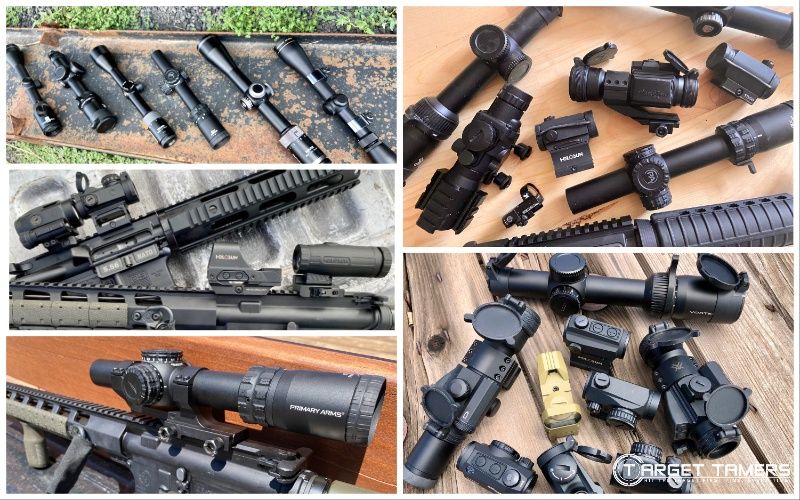
Overall, the decision to put a red dot sight or a riflescope on an AR-15 comes down to personal preference and the intended application. No one optic does it all, but if it will cover the shooter’s needs 80-90% of the time, it’s a good optic for the AR-15.
If most of your shots are inside a couple hundred yards, a red dot sight and maybe even a magnifier on the rail will serve you well. On an AR-15, you can reap in the benefits of speed, maximum situational awareness, and accuracy from off-angle positions.
Shooters seeking long range, precision accuracy, and target clarity should consider a riflescope. Also, those with aging eyes and less than the best visual acuity may find that a riflescope reticle can be easier to see.
For everyone else who wants distance and CQB benefits as well, an LPVO will be appealing. It bridges the gap between a red dot sight and a riflescope and is ideal on an AR-15.
If you're still deciding, it might be worth checking out our red dot vs LPVO guide to further narrow it down.
Further Reading



